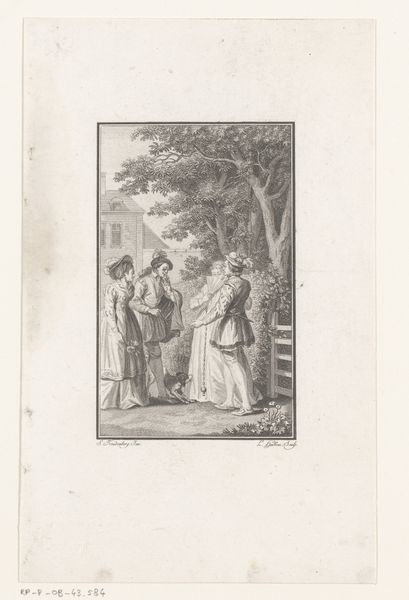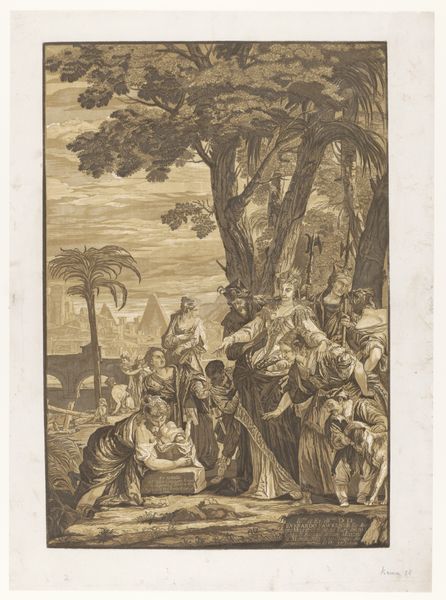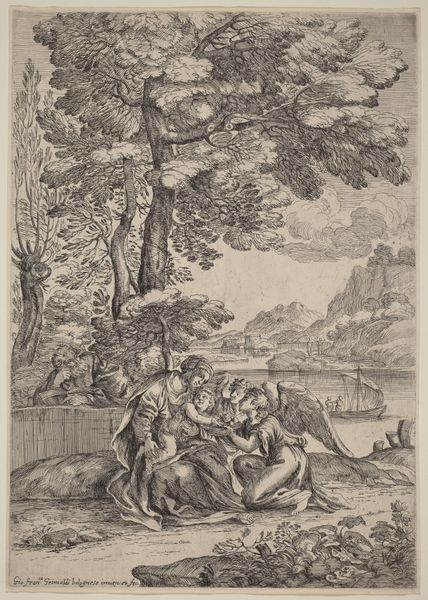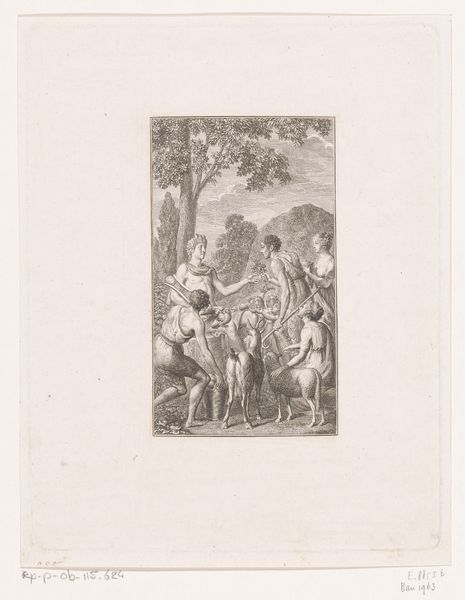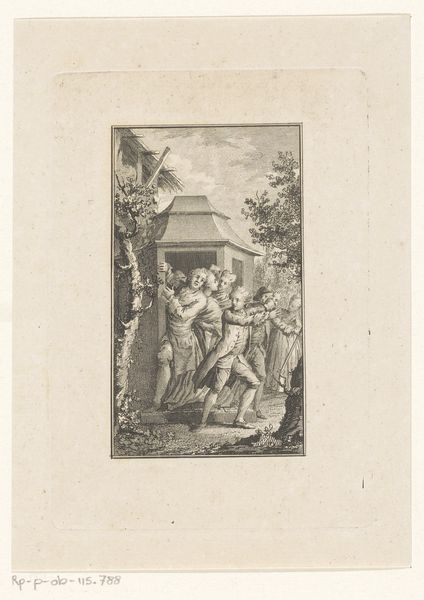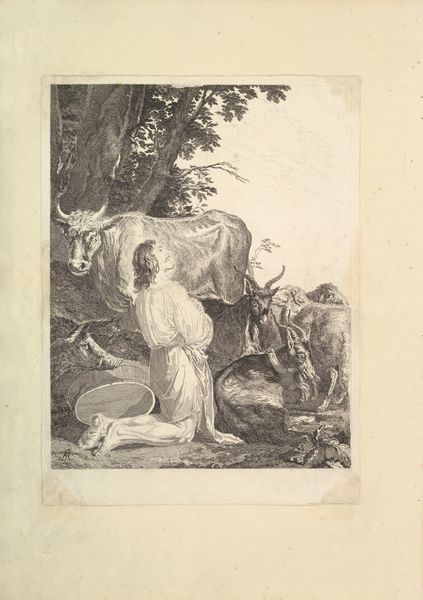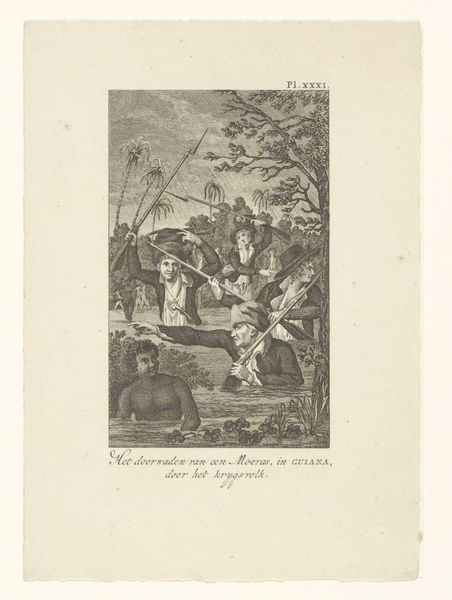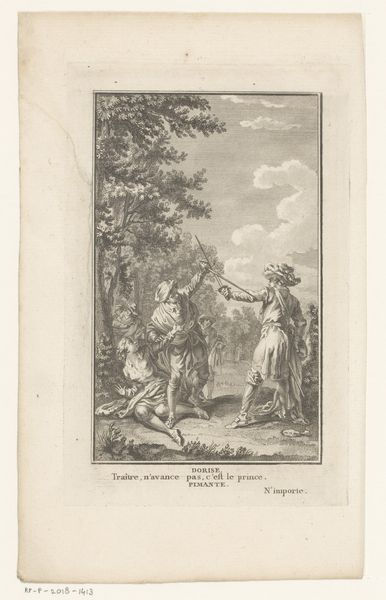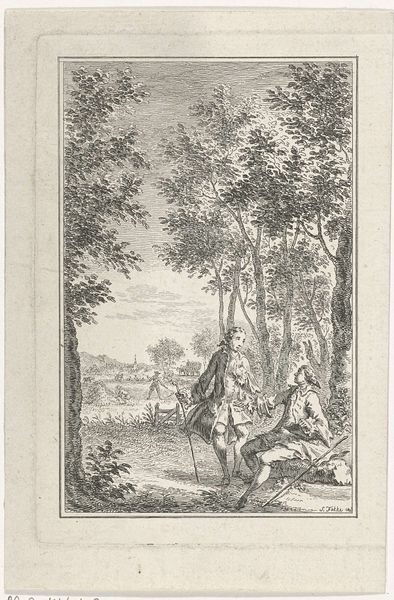
print, engraving
#
narrative-art
#
baroque
# print
#
old engraving style
#
landscape
#
figuration
#
history-painting
#
engraving
Dimensions: height 160 mm, width 95 mm
Copyright: Rijks Museum: Open Domain
Curator: Here we have an engraving titled "Pyramus and Thisbe," dating somewhere between 1650 and 1800, housed here at the Rijksmuseum. It’s an anonymous work, etched with a stark baroque sensibility. Editor: My immediate feeling? Melodrama, amplified by sharp lines and dense hatching. You can almost hear the tragic sighing in those stark black marks! Curator: Right. Look at the density of lines used to create shading and texture; it speaks to a particular printmaking tradition and its reliance on highly skilled labor to reproduce these classical scenes. This wasn’t just art, but reproducible iconography. Editor: Exactly! It makes you consider who could actually afford these prints—this level of reproducible image—at the time? It’s like an early version of a movie poster… except way more tragic. Imagine framing your favorite heart-wrenching scene from your last dramatic love affair and putting that above the fireplace. Dark! Curator: That reading speaks to the broader context of visual consumption, how these prints circulated, and their role in disseminating stories. It shifts away from focusing solely on artistic genius and toward material conditions. Editor: Absolutely, though let's not forget the artistry. The way the engraver uses shadow to heighten the pathos in Thisbe’s pose! You feel her utter despair. Also, observe the landscape... how it becomes another character of its own by underscoring, almost mocking, her anguish in her final moments. It reminds me how tragic and beautiful life can feel even amidst pain, even when death seems easier! Curator: That interplay between figure and landscape connects back to baroque sensibilities. Notice how the flowing water in the fountain becomes like tears cascading amidst rigid architectural constructs! Such contrast reflects broader power structures at work. Editor: True, it’s like everything conspires towards that dramatic finale. A fountain becoming a weeping cherub? Total theatricality! And let's just pause to appreciate how even from afar, the details of this seemingly bleak image call us in to feel something. The artist managed to create a piece, not merely showing loss, but almost simulating it. What I appreciate here is the level of narrative economy and intense emotions it gives access to, particularly in printed form. Curator: Agreed. These narrative-driven engravings served more than an aesthetic purpose: They played a role in sharing history, mythology, and values. Their afterlife continues in how we interact with these complex prints today. Editor: Well, if this doesn't trigger at least one existential crisis then I'm not sure what will. Art isn't supposed to only give us something to look at but something to reflect on... Thanks to all the artists out there.
Comments
No comments
Be the first to comment and join the conversation on the ultimate creative platform.


